WASHINGTON — The Association of the United States Army rolled out its annual exposition from Oct. 14-16 in Washington, with defense industry officials, lawmakers and military personnel from around the globe huddling to discuss the future force — and what threats may await just over the horizon.
As in previous years, the service continues its aggressive modernization push, with efforts focused on next-gen weaponry and vehicles, personnel training, long-range artillery, unmanned systems, defense capabilities, network domains and much more.
Such efforts, meanwhile, continue to be influenced by evolving conflicts abroad.
Russia’s prolonged invasion of Ukraine is dragging toward another brutal winter as manned and unmanned innovations reshape the region’s tumultuous front lines. Tensions endure in the Middle East, where regional attacks by Iranian proxies remain a looming threat to U.S. troops and allies. And arsenal developments and troop movements throughout the Indo-Pacific region continue to unfold in response to increasingly bold territorial assertions out of Beijing.
Army officials attending the conference emphasized the service’s need for flexibility and quick adaptation as the technologies, policies and spending at the core of these conflicts intersect with all corners of the globe.
Defense News and Army Times covered these discussions — and much more — from the show. Catch up on all of our top stories from this year’s AUSA conference and be sure to read more of our latest coverage at defensenews.com/digital-show-dailies/ausa.
Modernization Training Personnel Industry International Unmanned Tech Sponsored By: Rheinmetall Back to Top
Modernization
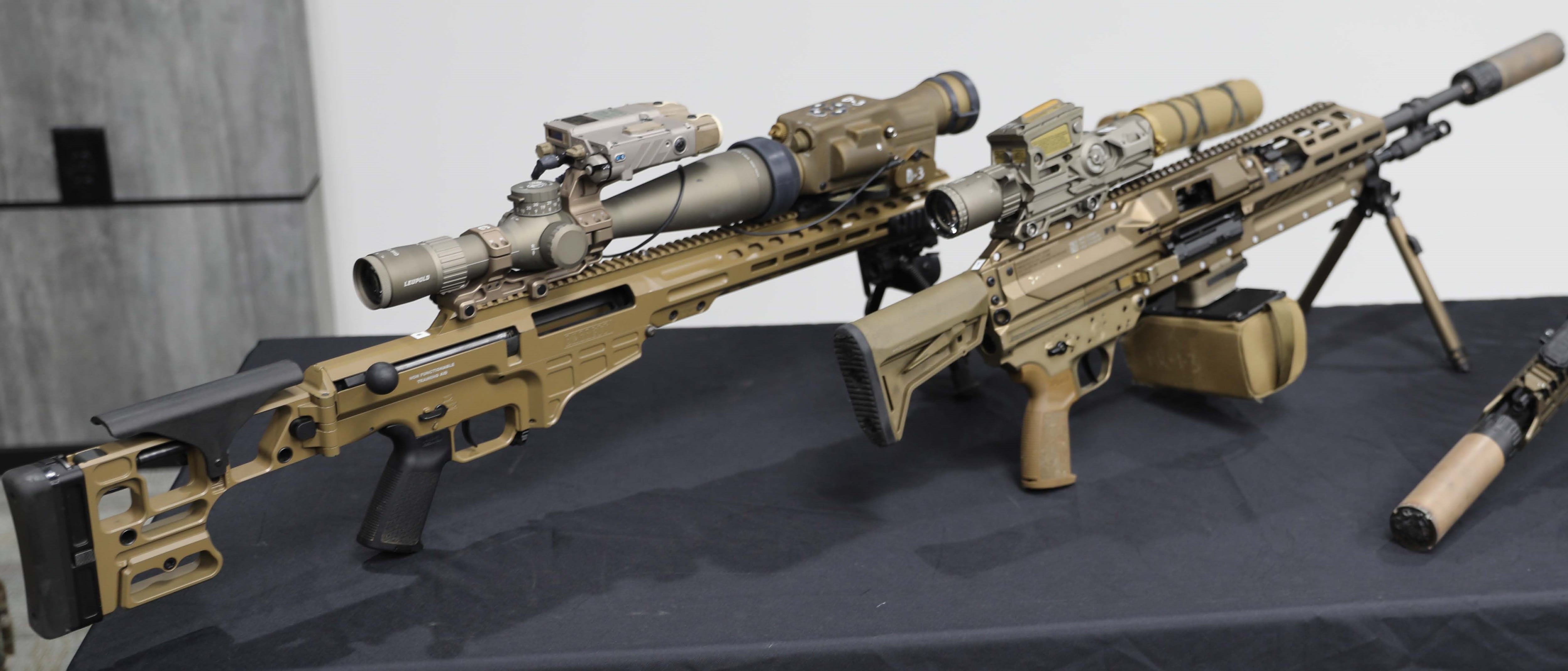
All the high-tech gear the Army is bringing to soldiers
As technology advances, the gear soldiers use to survive on the battlefield and accomplish their missions becomes more sophisticated. As the epicenter of all things soldier gear, Program Executive Office-Soldier works with Army laboratories, research and development commands to deliver ready-to-field kit to troops, with gear ranging from soldiers’ boots to advanced targeting and night vision.
Army Times spoke with experts at PEO Soldier ahead of this year’s Association of the U.S. Army’s Annual Meeting and Exposition in Washington, D.C, about some of the more high-tech equipment they’re developing and fielding. Read more here.
Trial by fire: How the Army banks on frontline units to test new gear
When learning recently that a prototype of the Army’s new air and missile defense radar was performing significantly better in tests than the old Patriot radar, Army Chief of Staff Gen. Randy George had an idea.
Why not send the Raytheon-made Lower Tier Air and Missile Defense Sensor, or LTAMDS, to units stationed in the Pacific, the Middle East or Europe to get a sense of how the new equipment works in field, he suggested.
The process would essentially outsource service test and evaluation procedures currently confined to controlled environments in the United States to what the Army calls the “tactical edge,” one step in a wider transformation initiative that prizes change driven by the deployed. Read more here.
How the Army’s chief of staff plans to modernize the service
The U.S. Army will ramp up its efforts to transform its formations with next-level technology including capabilities to counter drone threats much faster, Army Chief of Staff Gen. Randy George said.
“We have to buy smart and fast,” George said in a speech at the annual Eisenhower luncheon. “Our budget is tight, our numbers are lean and that requires us to prioritize and make informed investments.”
When George became Army chief a year ago, he announced he would focus on using units in the field to transform the service “in contact,” putting capability into the hands of soldiers in realistic operational environments to advance things that work and scrap what doesn’t. Read more here.
When will the Army embrace hybrid-electric vehicles?
The Army has long tinkered with the idea of making some of its vehicles electric or hybrid, and while the technology has become commonplace in the commercial vehicle industry, the service has yet to jump on the bandwagon.
As officials hedge their bets, companies have continued to put technology in front of the service in order to show the purported benefits, arguing that the technology is ready for prime time in the Army’s modernization plans. Read more here.
Take notes, a formation like this could be coming to your unit soon
In the piney woods of Louisiana, one brigade’s new approach to reconnaissance recently illustrated the Army’s plan to undertake more complex and demanding missions with new tech and fewer soldiers. The 2nd Mobile Brigade Combat Team, or MBCT, with 101st Airborne Division carried out their rotation at the Joint Readiness Training Center in August, the culmination of months of planning, new equipment training and restructuring.
The brigade is one of three selected by the Army chief of staff to be the focus of his “Transformation in Contact” initiative, which seeks to deliver new equipment to units as they increase their readiness and prepare for deployments. Read more here.
Modernization Training Personnel Industry International Unmanned Tech Sponsored By: Rheinmetall Back to Top
Training
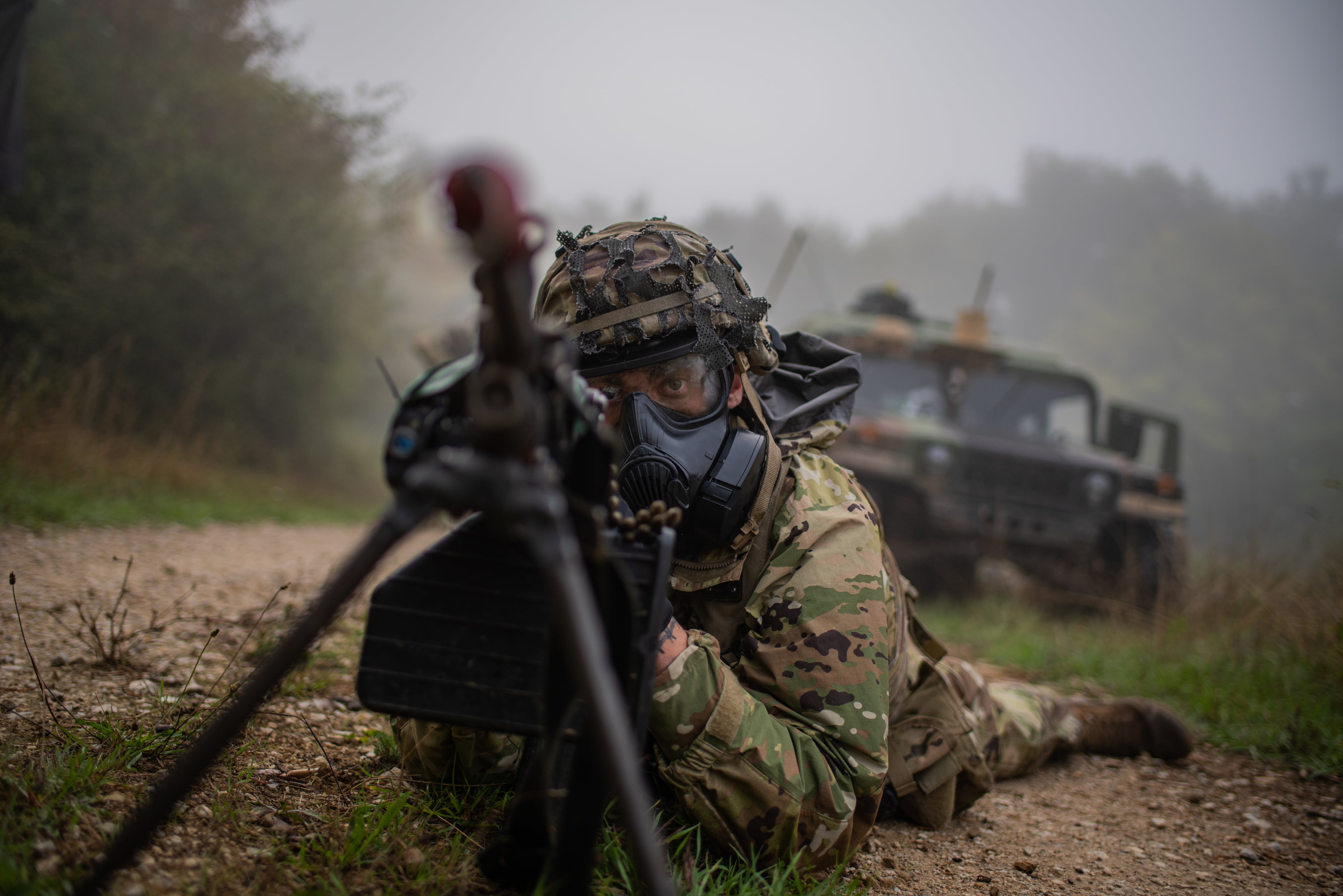
Fighting ‘dirty’ — The Army’s plan to survive, and win, a doomsday war
Daring moves by U.S. adversaries foreshadow the return of sinister nuclear, chemical or biological weapons as technological advances promise to bring new tools of destruction to strike soldiers on future battlefields. A soldier’s new best friend may not be a rifle, or altogether new weapons, but instead a gas mask, gloves and a protective suit.
As threats evolve, the Pentagon, and specifically the Army, is reimagining how units may have to fight large-scale combat in deadly, contaminated environments. But experts in Chemical, Biological, Radiological and Nuclear (CBRN) defense, must also fight complacency that’s existed for generations and bureaucratic red tape. Read more here.
From CamoGPT to life skills, the Army is changing how it trains troops
As the Army has adjusted its doctrine and modernized how it prepares soldiers for leadership and combat, the service’s Training and Doctrine Command touches nearly every aspect of those initiatives. Over the past year, new programs and updates to existing training have flowed across the force.
Army Times spoke with Gen. Gary Brito, head of Training and Doctrine Command, about some of these areas and what they mean for new and career soldiers. Brito took over his current command in 2022 after serving as the Army’s deputy chief of staff over personnel. Read more here.
Soldiers exposed to new combat realities with expanded training
A new approach to training brand new recruits in large-scale combat aims to prepare soldiers for future conflicts as the Army readies the force for a potential slugfest against foes like the Russian or Chinese militaries.
In March, the service launched “Forge 2.5,” another update to “The Forge,” which began as a concept in 2016 with a 96-hour field exercise for week-seven trainees. The Forge has been in place since 2018 as a regular feature of basic training. The event closely mirrors “The Crucible,” which the Marine Corps instituted in its recruit training in the 1990s. Read more here.
How the Army is improving care in the field to keep soldiers alive
The Army is revamping how it provides lifesaving care in the field, including new hospital setup gear, ways to preserve blood on the front lines and a new combat-ready respirator to keep wounded soldiers breathing. Over the past year, Program Executive Office-Soldier added medical devices to its portfolio of all things soldier, which includes clothing, weapons, body armor and a host of other items.
The 1945th Medical Detachment is slated to stand up in late 2025 and will hold three Prolonged Care Augmentation Detachments, or PCADs, officials said. Early work on the PCADs began as all U.S. service branches acknowledged that large-scale combat operations would mean wounded soldiers might have to wait longer for care. Read more here.
Training changes on the horizon for Army Guardsmen
The Army National Guard must find new ways to train in a limited number of days each year so that their formations are ready to fight large-scale combat operations when called, Army National Guard Director Lt. Gen. Jonathan Stubbs said Tuesday at the annual Association of the U.S. Army conference.
Guardsmen are generally restricted to serving 39 days each year, and in that time, soldiers must practice everything from physical training and small arms marksmanship to knocking down aerial threats or planning how to move a brigade across the globe. Read more here.
Why Army divisions must prepare to get dirty
During this past year the Army sent a division headquarters and its enablers into a large-scale, on-the-ground exercise to learn how these personnel groups will approach surviving the next war.
It was the first time in decades that division headquarters and the myriad units it would go into combat with — a combat aviation brigade, sustainment, air defense brigade and division artillery — trained together in person. But it certainly will not be the last. Read more here.
Modernization Training Personnel Industry International Unmanned Tech Sponsored By: Rheinmetall Back to Top
Personnel
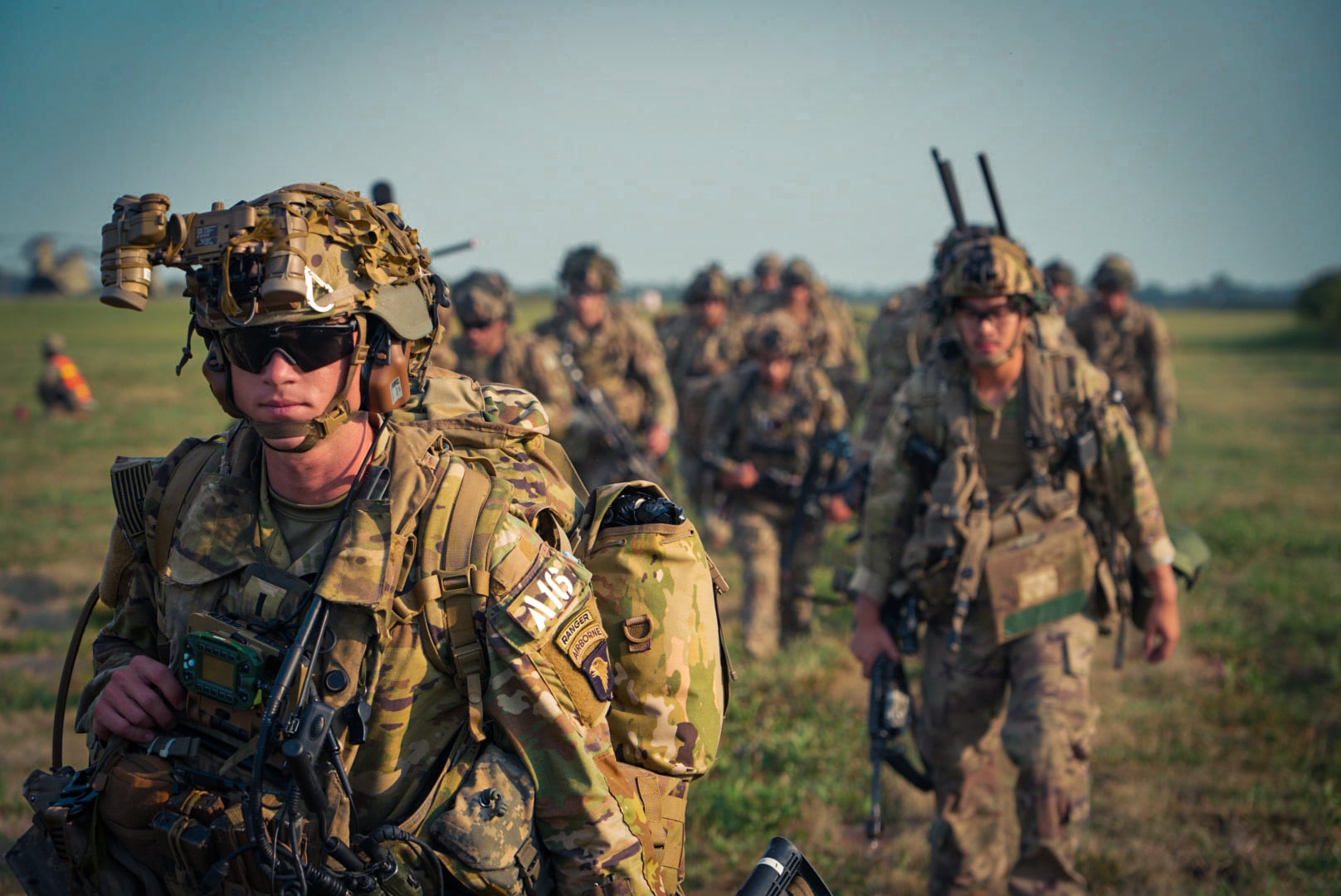
What ‘Transformation in Contact’ means for the enlisted soldier
Over the past year, Army Chief of Staff Gen. Randy George and his top generals have merged two constant Army initiatives: readiness and modernization. Keeping soldiers ready to fight when called and delivering them new gear, updated doctrine and time to train on their equipment and tactics is a balancing act.
Although the Transformation in Contact initiative is part of an Army-wide effort, three brigades have been selected to test out many of the on-the-ground changes, including 2nd Brigade, 101st Airborne Division out of Fort Campbell, Kentucky; 2nd Brigade, 25th Infantry Division out of Hawaii; and 3rd Brigade, 10th Mountain Division out of Fort Drum, New York.
The brigades are buying commercial equipment and reconfiguring their unit structures to find out what they’ll need for a future fight. Read more here.
US Army sets ambitious new recruiting goal following years of struggle
The U.S. Army is aiming to recruit 61,000 new soldiers in the coming year, an ambitious goal that is building off of the service surpassing its goal with 55,000 new recruits in fiscal 2024 after several dismal recruiting years, Army Secretary Christine Wormuth announced Monday at the Association of the U.S. Army’s annual conference.
The Army recruited 55,000 new soldiers in FY24. The service’s Delayed Entry Program goal for FY25 is 10,000, which is twice the number as FY24, Wormuth said. The delayed entry program allows enlistees to sign up but leave for initial training later, often so that they can complete high school or college.
“This goal is ambitious but we believe it is achievable,” she said. Read more here.
How saving soldiers’ lives influenced the Army’s new kit options
While new night vision and advanced drones often attract a lot of attention, soldiers know that much of their comfort and survival in training and combat often depends on what they wear. Everything from boots and weapons to first aid pouches, new bomb suits for explosives specialists and even cold weather gear comes out of Program Executive Office-Soldier.
Such items — whether it’s the new Greens uniform, a better hot-weather boot, poncho or the beloved “woobie” — are all part of what soldiers wear. Army Times spoke with gear experts at PEO Soldier ahead of the Association of the U.S. Army’s Annual Meeting and Exposition about some of the items soldiers wear that are being fielded, developed or improved. Read more here.
Army wants all troops on new fitness program by 2032. How’s it going so far?
The Army recently announced that its all-around health and fitness program will now expand beyond a select 111 brigades to the entire Army. Since its inception in 2018 with a pilot program, the Holistic Health and Fitness program, or H2F, has sought to educate and improve soldier performance in physical, mental, nutrition, spiritual and sleep domains.
To that end, the force has built brigade-level civilian teams of nearly two dozen contracted staff members, which include an H2F program director; nutrition, injury control and mental health directors; registered dietitians; physical therapists; athletic trainers; strength coaches; cognitive performance specialists and occupational therapists. Read more here.
How Project Polaris is gearing up the brigade by targeting the squad
The home for all things soldier gear is partnering with a host of Army entities on a project to build a better infantry brigade by working from the bottom up at the soldier and squad level. Army Times spoke with Maj. Gen. Christopher Schneider, commander of Program Executive Office-Soldier, ahead of the annual Association of the U.S. Army’s Annual Meeting and Exposition about the “Project Polaris” initiative.
Coordinating the Army’s many groups that encompass all the parts of a brigade requires significant effort. The coordination between Schneider’s command and others is now considered the service’s Close Combat Integration Enterprise, or CCIE, Schneider said.
“We have never been as aligned as we are today,” Schneider added. Read more here.
Soldiers will get $240 a month for operational deployments
Soldiers deployed for more than 60 days in an Army operation will now receive an extra $240 each month. For those already deployed, the cash benefit is retroactive to Oct. 1, said Secretary of the Army Christine Wormuth.
The new benefit, dubbed “operational deployment pay,” is specifically for operational deployments and does not cover exercises at the combat training centers, Wormuth said. For example, the pay is intended for brigades and battalions who’ve deployed to Europe for Operation Assurance, she said. Read more here.
Modernization Training Personnel Industry International Unmanned Tech Sponsored By: Rheinmetall Back to Top
Industry
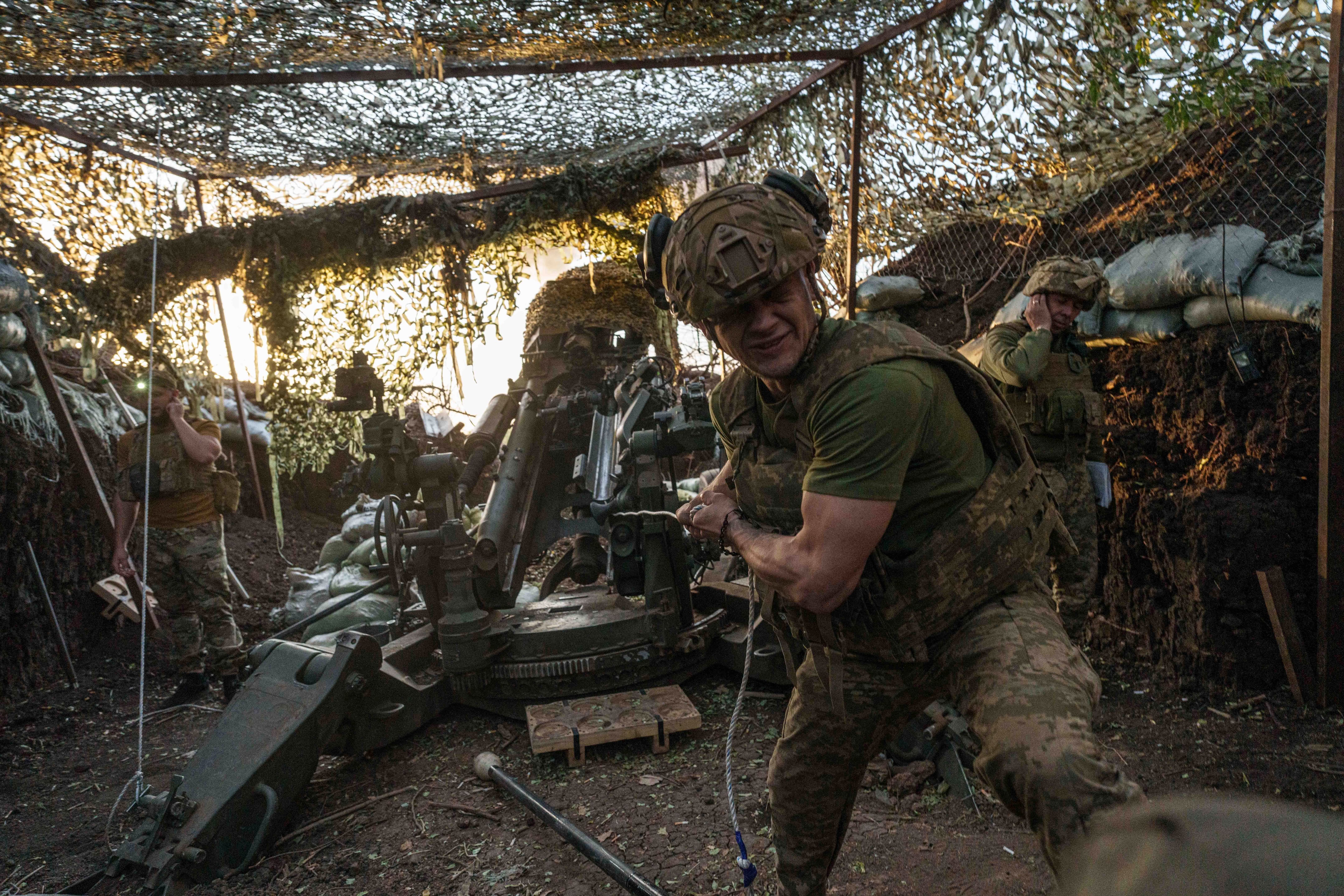
Army races to widen the bottlenecks of artillery shell production
The U.S. Army has started diversifying its supplier base for 155mm artillery shells, moving away from the bottleneck of a single source that has endangered the flow of fresh ammo, according to a top service official. The service is racing toward a goal of shoring up all major single sources that provide parts or materials for 155mm munitions by the end of 2025.
“There’s going to be a lot of ribbon cuttings between now and the end of the year,” Doug Bush, the Army’s acquisition chief, told Defense News.
The Pentagon is investing billions of dollars to increase the capacity of 155mm munition production as it races to replenish stock sent to support Ukraine’s fight against the Russian invasion, which began in early 2022, and to ensure the U.S. has what it might need should conflict erupt across multiple theaters at once. The Army planned to spend $3.1 billion in FY24 supplemental funding alone to ramp up production. Read more here.
Why the Army is looking abroad to close a widening artillery gun gap
More than two years into observing an artillery war play out in Ukraine, the U.S. Army finds its own gun technology options lacking. The service’s current arsenal is either old, as is the case of the towed M777, or lacking the desired range for future conflicts against near-peer armies, exemplified by the latest version of the Paladin self-propelled howitzer, made by BAE Systems.
The recent cancellation of an effort to mount an unwieldly long barrel on a Paladin body — length determines range, generally speaking — has forced the service to start from square one yet again. The Army quietly halted the yearslong prototyping effort, dubbed the Extended Range Cannon Artillery, or ERCA, a year ago, announcing only this March that “engineering challenges” had turned out to be insurmountable, as acquisition chief Doug Bush put it. Read more here.
US Army quits plan for next-gen Patriot missile replacement
The U.S. Army has decided to back off an effort to replace its Patriot missile with a next-generation interceptor, according to Maj. Gen. Frank Lozano, program executive officer for missiles and space.
“We are not going to move forward on what we were calling a Lower-Tier Future Interceptor,” Lozano told Defense News in an interview at the Association of the U.S. Army’s annual conference, adding that those scrapped plans would have been “a very expensive endeavor.”
The effort would have completed the final piece of the puzzle in a new Integrated Air and Missile Defense System. Already the service has fielded its command-and-control system, and is developing and will soon field a new radar capable of detecting threats from 360 degrees. Read more.
What the Army is planning for its vehicle-protection push
The U.S. Army wants to pursue a more layered approach to protecting combat vehicles and formations, a step away from the singular push over the last decade to outfit them with active protection systems, Army officials in charge of ground combat modernization told Defense News.
Army Futures Command has been working on a Formation Layered Protection requirement and is releasing what it calls a “characteristics of need” statement to industry. The Army is looking for ways to protect dismounted soldiers, vehicles and full formations from a variety of threats. Potential approaches include masking vehicles or hardening them with both active and passive protection tactics. Read more here.
GM Defense pitches silent-drive vehicle as heir to the Humvee
Emerging rapidly out of dense foliage, a truck swings around a bend on a washboard gravel road, but the only sound is the crunch of gravel beneath tires and the occasional ping of a rock hitting its underside.
The truck is a new hybrid vehicle that GM Defense has developed to show the Army what is possible for a Humvee-type capability that meets the needs of modern warfare. The Army does not yet have a requirement for a new Humvee, or High Mobility Multipurpose Wheeled Vehicle, or something else to replace the 40-year-old vehicle with 50-year-old technology. Read more here.
How the Army’s upgrading ammo to destroy targets large and small
From pistol rounds to artillery shells, the Army is developing a host of new ways to destroy targets large and small. The service is working on one-way tracer rounds for current standard rifle ammunition and reduced-range training rounds for some of the same cartridges.
Additionally, the service is testing proximity fuses for grenade launcher rounds that would help defeat enemies behind barriers and blast drones out of the sky. Meanwhile, on the larger end of the caliber spectrum, Army scientists are building new rounds for the 120mm tank rounds they expect will be needed to defeat enemy armor. Read more here.
Modernization Training Personnel Industry International Unmanned Tech Sponsored By: Rheinmetall Back to Top
International
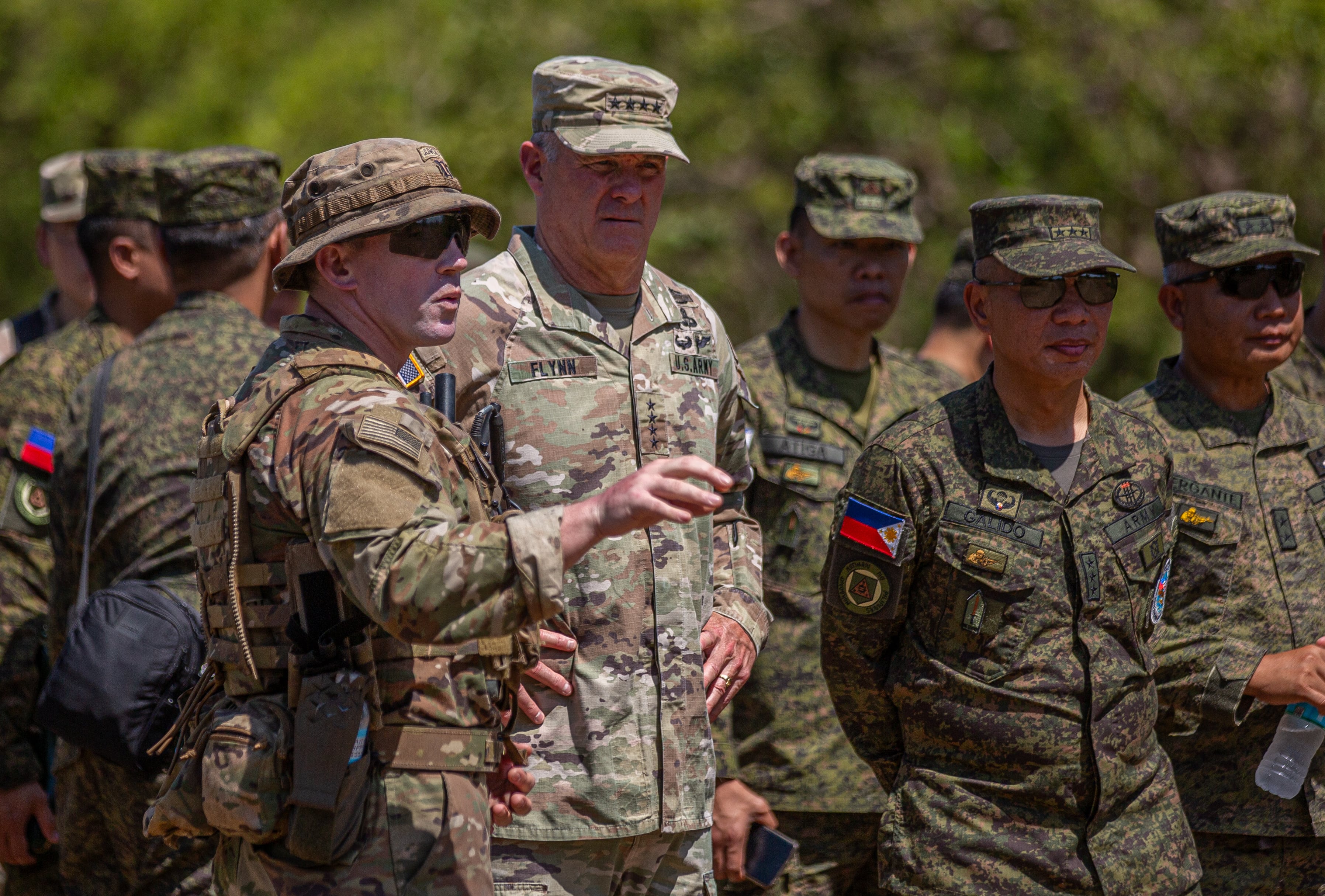
One on one with US Army Pacific Command chief Gen. Charles Flynn
The Army has spent the last year increasing the complexity and breadth of its exercises in the Pacific while trying out new capabilities that will soon be a part of formations in the theater. Relationships with Pacific nations have grown amid continuing tensions with China, and U.S. Army Pacific chief Gen. Charles Flynn has staked out a role for land forces in a region associated primarily with air and naval power.
Defense News sat down with Flynn prior to the Association of the U.S. Army’s annual conference. Here are edited excerpts of the conversation. Read more here.
US Army Pacific to absorb new units under ‘transformation’ mantra
The U.S. Army command for the Indo-Pacific finds itself at the front of the service’s transformation initiative, incorporating new unit types created to facilitate rapid adaptation to adversary tactics, according to U.S. Army Pacific Command chief Gen. Charles Flynn.
Several units in the Pacific, from Hawaii to Alaska, were chosen as part of Army Chief of Staff Gen. Randy George’s initiative, dubbed “Transforming in Contact,” Flynn said in an interview ahead of the Association of the U.S. Army’s annual conference.
“But there’s a whole other transformation in contact that’s going on out here at the operational and theater level.” That transformation has to do with absorbing new organizations and capabilities designed to facilitate the quick incorporation of new tactics and technologies in the field. Read more here.
Project Convergence to plant a flag in the Pacific
The military’s massive experimentation event, Project Convergence, will plant a flag in the strategically vital Pacific region next year, the first time that U.S. and allied forces will kick the tires of the Pentagon’s latest warfighting concepts at the edge of America’s sphere of influence.
“Our large experiments need to be concept-informed, and the concepts we’re talking about are the sets of capabilities and relationships that we think we’re going to need to win in the operating environments we are going to face in the future,” said Army Brig. Gen. Zachary Miller, who heads the Joint Modernization Command at Fort Bliss, Texas. “And the priority theater for the Department of Defense is the Pacific.”
The joint force has simulated Pacific scenarios in the United States during previous iterations of the exercise, which began as an Army-only event in 2020 at Yuma Proving Ground, Arizona. But the experimentation campaign has never been held forward in relevant theaters aside from some peripheral activities at the Army Pacific headquarters level earlier this year. Read more here.
How the US Army is helping Ukraine with front line repairs
It starts with a message on the secure messaging app Signal.
Front line units in Ukraine see an issue with their equipment and send notes to translators, who soon share those with the U.S. military. Then, operating from one of seven stations in Poland, American forces schedule video calls with the Ukrainians to help them repair the weapons.
This is the process for the Army’s virtual repair mission to help keep equipment working as long and as close to the front line as possible in Ukraine. Read more here.
Sending THAAD to Israel adds to strain on US Army, leaders say
The deployment of a U.S. Terminal High Altitude Area Defense battery to Israel and roughly 100 soldiers to operate it will add to already difficult strains on the Army’s air defense forces and potential delays in modernizing its missile defense systems, Army leaders said Monday.
The service’s top two leaders declined to provide details on the deployment ordered by Defense Secretary Lloyd Austin over the weekend. But they spoke broadly about their concerns as the demand for THAAD and Patriot missile batteries grows because of the war in Ukraine and the escalating conflict between Israel and Iran-backed Hezbollah and Hamas militants. Read more here.
Army weighing sending missile defense prototypes forward into theater
Tasked by the Army Chief of Staff Gen. Randy George, the service’s missiles and space shop is examining the possibility of sending new air and missile defense capabilities still in the prototype phase into theater, the program executive officer told Defense News.
“The chief has challenged us and has asked us to look at opportunities, present some options, by which we would accelerate [the Integrated Battle Command System] to the field, accelerate [the Lower Tier Air and Missile Defense Sensor] to the field and accelerate some of the [Indirect Fire Protection Capability] capabilities to the field,” Maj. Gen. Frank Lozano said in an interview ahead of the Association of the U.S. Army’s annual conference.
Both the Raytheon-developed LTAMDS and Leidos’ Dynetics-made IFPC have experienced successful test events over the past year. Read more here.
Modernization Training Personnel Industry International Unmanned Tech Sponsored By: Rheinmetall Back to Top
Unmanned Tech
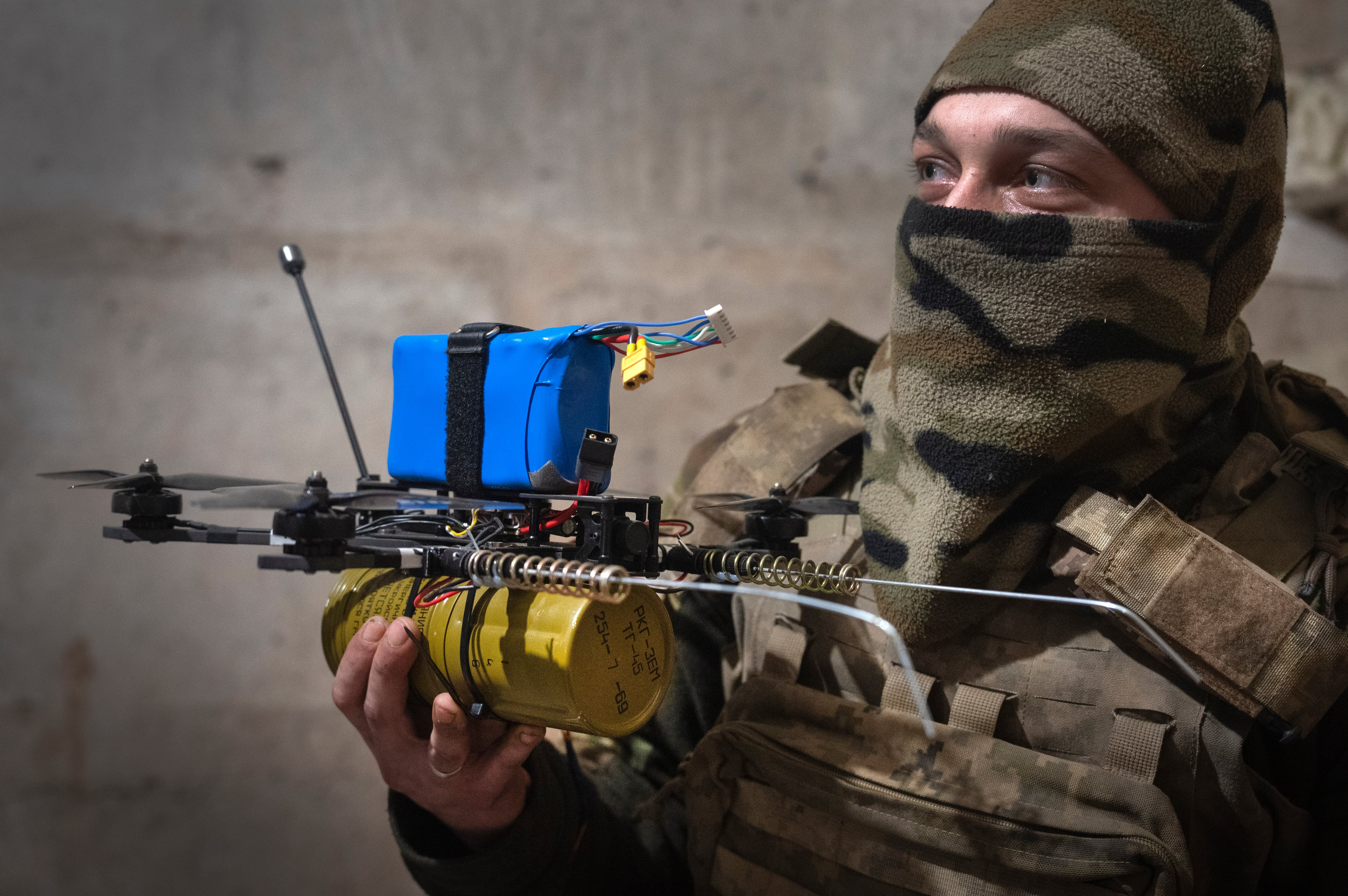
As Ukraine builds better drones, do American firms still have a role?
In mid-September, massive explosions erupted in Toropets, a city in eastern Russia near the border with Belarus. Ukraine had struck a military warehouse, igniting bombs and missiles in what Pentagon officials later said was Russia’s largest loss of Russian ammunition during the war — hundreds of thousands of rounds destroyed.
Almost as important, though, was how Ukraine conducted the strike. Toropets is more than 300 miles from the Ukrainian border, outside the range of western weapons Kyiv wants permission to fire deep into Russia. Instead, Ukraine used drones it built alone. Read more here.
How the Army plans to remove soldiers from the deadly breach
If a collection of soldiers and scientists are successful, troops may never again have to run, on foot, into a breach, swinging a grappling hook in a scene resembling medieval foot soldiers breaking through enemy fortifications.
Instead, soldiers of the future may pilot explosives-laden drones and robotic bulldozers into the tangle of concertina wire, steel barricades and landmines. Over the past nine months, the 264th Engineer Clearance Company, with the 20th Engineer Brigade at Fort Liberty, North Carolina, began its third phase of human-machine teaming experiments. Read more here.
Make counter-drone training as routine as marksmanship: Army general
Soldiers recently deployed to the Middle East often had less than a minute to decide how to take down an incoming drone. A unit detecting, intercepting and destroying a drone often took less than four minutes, said Maj. Gen. Scott Naumann, commander of the 10th Mountain Division.
To meet that threat, the two-star is working with his unit and using a soldier-created tool to prepare troops to counter drones more effectively.
“Training [counter-drone] should be as routine as drawing our rifles, going to the range and honing our marksmanship skills,” Naumann said. Read more here.
Army closes in on autonomous boats to ferry supplies into battle
The Army is developing requirements to distribute supplies to troops on the battlefield in a contested environment using a network of autonomous boats and aircraft, according to the general in charge of logistics modernization.
“Our focus is an ecosystem looking at how we improve the supply chain, but also ensuring that we could keep that supply chain in motion — given a peer adversary like China — [when] we’re not able to [establish] fixed sites and keep them there for long periods of time,” Brig. Gen. Shane Upton, the Contested Logistics Cross Functional Team lead within Army Futures Command, told Defense News. Read more here.
For Replicator 2, Army wants AI-enabled counter-drone tech
The Army is eyeing a mix of existing and new technology to potentially scale through the second iteration of the Pentagon’s Replicator initiative, including systems that use artificial intelligence and machine learning to target and intercept small-drone threats.
Defense Secretary Lloyd Austin announced last month that Replicator 2 would center on countering threats from small drones, particularly those that target “critical installations and force concentration,” he said in a Sept. 29 memo. DOD plans to propose funding as part of its fiscal 2026 budget request with a goal of fielding “meaningfully improved” counter-drone defense systems within two years. Read more here.
Modernization Training Personnel Industry International Unmanned Tech Sponsored By: Rheinmetall Back to Top




